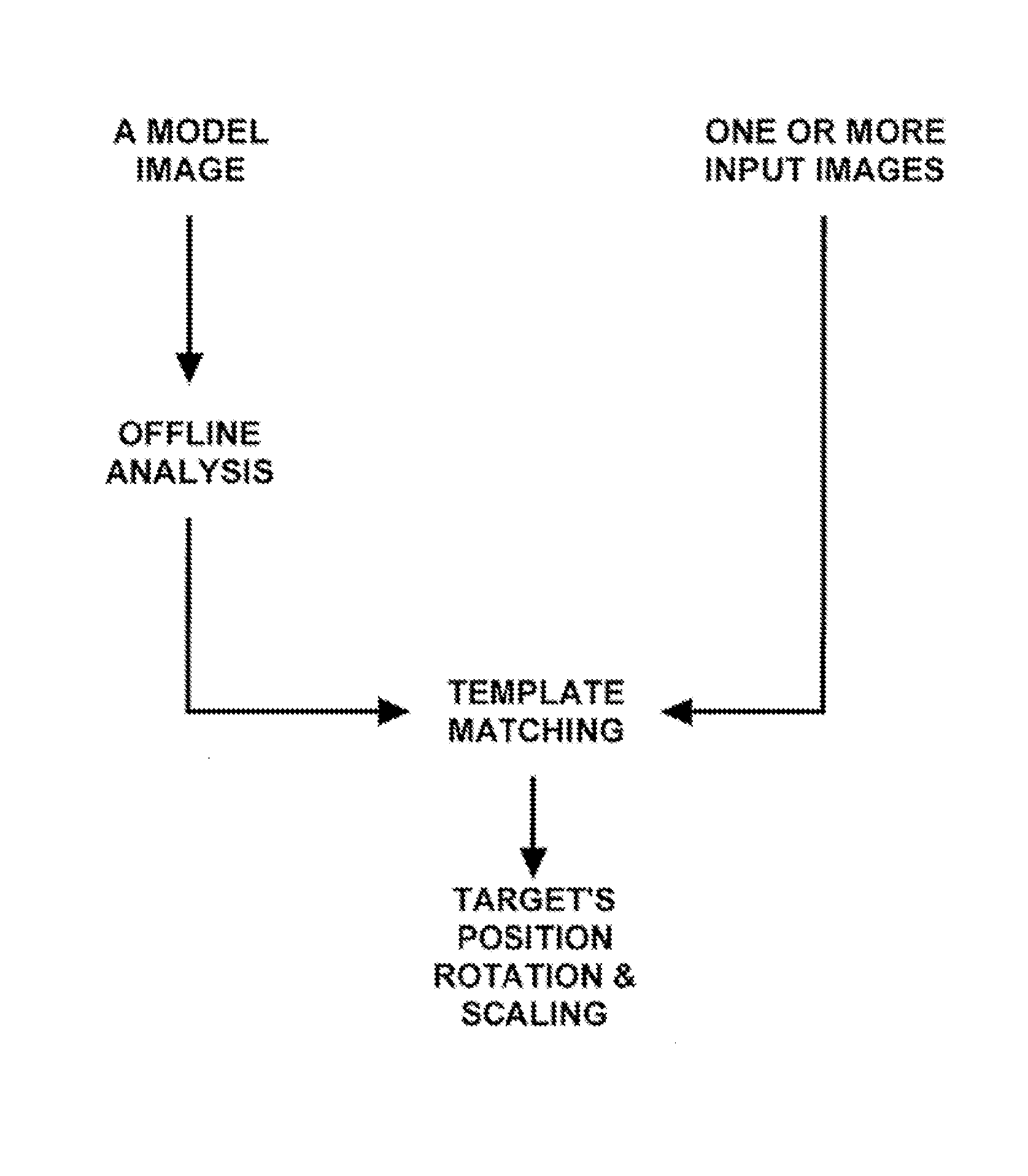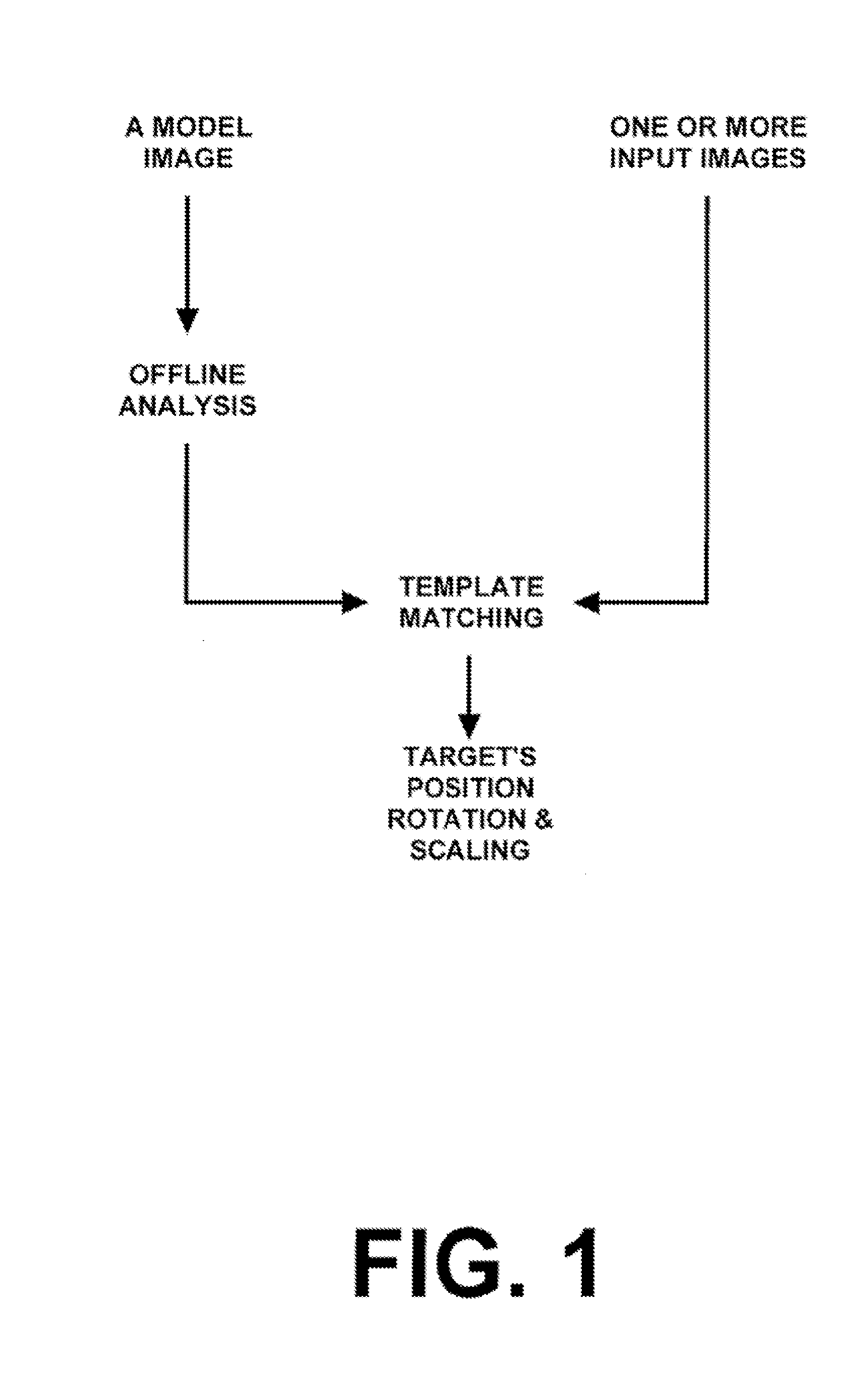Hierarchical image classification system
a classification system and hierarchy technology, applied in image analysis, image enhancement, instruments, etc., can solve the problems of preventing the generation of valid homographies, pixel-based template matching is very time-consuming and computationally expensive, and the matching scheme is far more computationally expensiv
- Summary
- Abstract
- Description
- Claims
- Application Information
AI Technical Summary
Benefits of technology
Problems solved by technology
Method used
Image
Examples
Embodiment Construction
[0044]Referring to FIG. 2, in many cases a model image has a limited set of feature points but tends to have relatively sharp edge features. One such example is a paperclip. Then using a suitable matching technique it is desirable to find a matching object in one or more input images, in a computationally efficient manner. The matching object may be at an unknown position and at an unknown rotation.
[0045]Referring to FIG. 3, in many cases the input image may have one or more matching objects of interest, which may be overlapping with one another. Then using a suitable matching technique it is desirable to find matching objects in one or more input images, in a computationally efficient manner. The matching objects may be at an unknown position and at an unknown rotation.
[0046]Referring to FIG. 4, in many cases the input image may have one or more matching objects of interest, which may be overlapping with one another. Then using a suitable matching technique it is desirable to find ...
PUM
 Login to View More
Login to View More Abstract
Description
Claims
Application Information
 Login to View More
Login to View More - R&D
- Intellectual Property
- Life Sciences
- Materials
- Tech Scout
- Unparalleled Data Quality
- Higher Quality Content
- 60% Fewer Hallucinations
Browse by: Latest US Patents, China's latest patents, Technical Efficacy Thesaurus, Application Domain, Technology Topic, Popular Technical Reports.
© 2025 PatSnap. All rights reserved.Legal|Privacy policy|Modern Slavery Act Transparency Statement|Sitemap|About US| Contact US: help@patsnap.com



